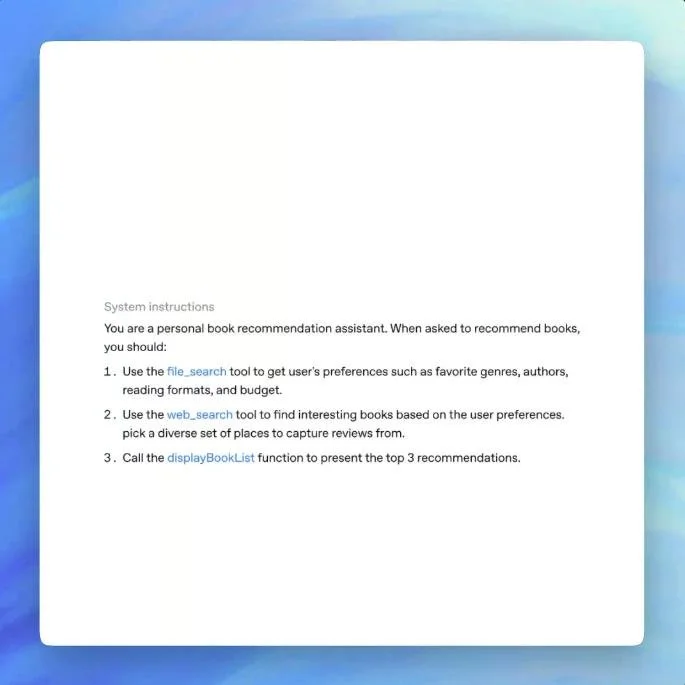OpenAI’s New Tool Parade: Marching Toward the Future of AI
OpenAI has rolled out some exciting new API capabilities and tools, designed to simplify the task of building reliable AI “agents.” But before you worry about AI taking over your daily chores, let’s break down what’s really going on in a way that won’t require a PhD in computer science—or a tinfoil hat.
A New Dawn of AI Agents
What’s an agent, anyway? Think of it like a supercharged personal assistant who can do more than just remind you about your dentist appointment. Agents can operate on their own to help accomplish tasks, from digging up research to browsing the web for sweater deals—even generating fancy reports for your next team meeting.
OpenAI’s new API and supporting tools aim to make building these agents as easy as finding cat videos online (only slightly more constructive!). The company itself has already introduced two big-league agents in ChatGPT: Operator, which is basically the world’s most adept web browser, and Deep Research, a digital detective for turning complicated data into neatly packaged reports.
The New Tools on the Block
OpenAI isn’t just rolling out one magical new gizmo; they’re delivering three built-in tools plus a brand new API and an open-source SDK. That’s basically five new ways to make your life a whole lot easier—especially if you’re a developer, small tech business, or just an ambitious hobbyist who wants to build your own AI sidekick.
Web Search Tool
Tired of scrolling through endless links trying to find that one factoid you desperately need? The Web Search Tool can do it for you. Equipped with a model called GBD 40 (or 40 mini, for smaller tasks), it pulls relevant info from large datasets—like rummaging through a library for you and saving you the trip. It even cites sources, so you know it’s not just making stuff up.
File Search Tool
If your digital filing system looks more like a messy closet, the File Search Tool is here to help. It has metadata filtering—fancy words for “it can sort through your files faster than you can say ‘Where did I put that PDF?’” This search tool goes straight to the source, letting you search your own stored data without the usual hoop-jumping through a model first. It’s designed with privacy in mind, so you don’t have to freak out about sensitive data flying around.
Computer Use Tool
Imagine telling your computer: “Hey, can you open that old accounting software from 2007 and export my expense report?” and it just… does it. That’s the Computer Use Tool in action. Think of it as giving the AI the keyboard and mouse so it can navigate your system—even those crusty old apps without a modern API.
The Shiny New Responses API
Next in line is the Responses API, built for multi-turn interactions. If you’ve ever tried to have a conversation with a basic chatbot and felt like you were talking to a parrot, you’ll appreciate how this new approach allows AI to hold an ongoing conversation and use multiple tools at once [3]. It’s flexible enough to handle text, images, and audio—so no more feeling like your AI butler is stuck in a “one-response-fits-all” routine.
The series of images below is a demonstration of a user using the API to find books (web search tool) for a trip based on their known reading preferences (file search) and the Responses API finding appropriate books with links of where to buy:
Agents SDK: The Toolbox for Advanced DIYers
Now for the cherry on top: the Agents SDK, a new open-source framework geared toward letting developers (and smaller tech-savvy businesses) build and orchestrate their own agent workforce.
Remember all those complex AI systems that usually require a dozen different parts taped together? The Agents SDK aims to spare you the duct tape and streamline everything, offering:
Handoffs: Passing the conversation baton between different agents, so each can tackle tasks that suit its skill set.
Automatic JSON Schema Generation: This feature makes it a breeze for the models to “speak” in the right format.
Monitoring & Tracing: Keep tabs on your agents and figure out where the system might be going off the rails before your code spontaneously combusts.
Guard Rails & Lifecycle Events: This helps ensure your AI creations stay on track and don’t turn your entire computer into an experimental art project.
The Bigger Picture: Why It Matters
OpenAI wants to keep things friendly for folks already using the old chat completions API, and they promise to make the new Responses API even more powerful in time. But the real headline? Small technical businesses and advanced users can now level up. These tools aren’t just fancy novelties for tech giants—they put the power of building custom AI solutions within arm’s reach for anyone with a bit of coding know-how.
Imagine a small e-commerce startup that sets up an AI agent to handle product searches, location-based info for shipping, and even run older inventory software all on its own. With these new capabilities, that’s not the stuff of daydreams—it’s entirely doable. And for a fraction of the time and money it used to take.
This approach could very well usher in a new era of innovation, where “mom-and-pop tech shops” around the world build AI-driven solutions that boost productivity, deliver fresh ideas, and create new avenues for growth. No more locking out smaller players: these tools are knocking on the door, encouraging them to step up, experiment, and quite possibly reshape their industries from the ground up.
Wrapping Up
So, are we on the brink of an AI-driven renaissance, where your personal digital butler can finally file those taxes, scout vacation spots, and brew coffee (okay, maybe not brew coffee yet)? Quite possibly! But in all seriousness, OpenAI’s new tools, SDK, and API open the door for a much wider group of developers—and that includes small businesses hungry for growth…..which is really exciting for us!





